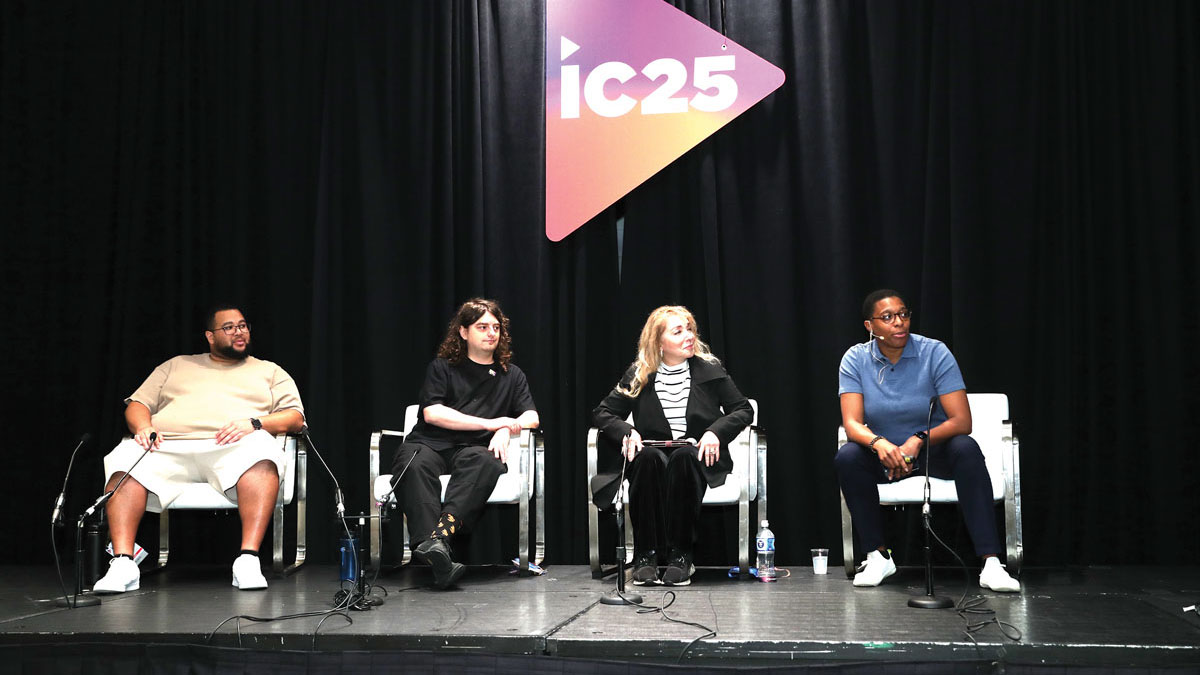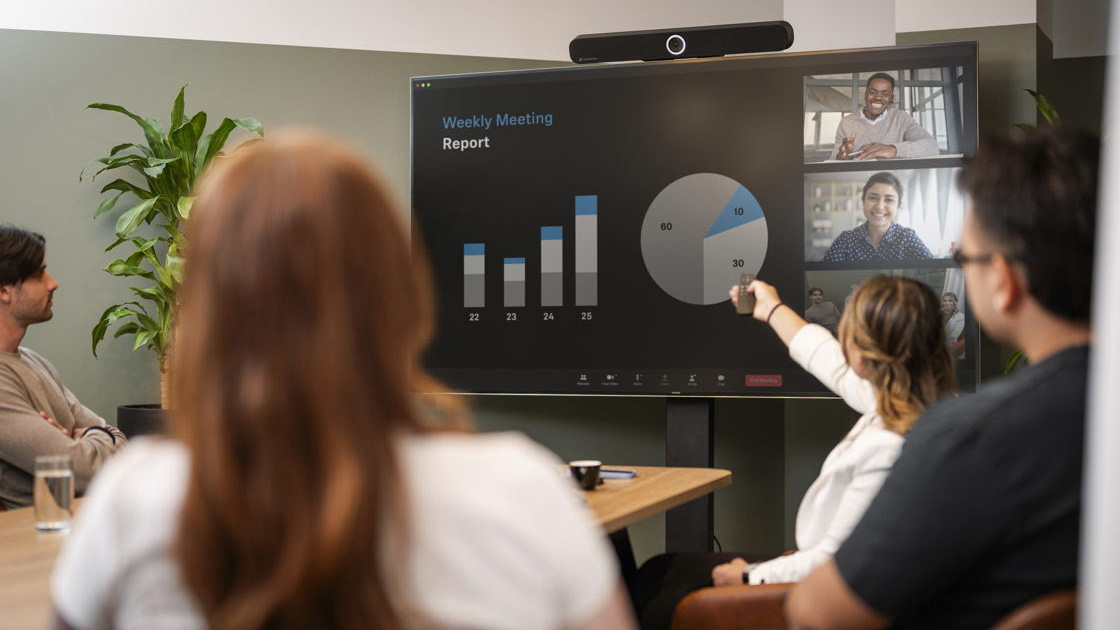Gingerly Adopting AI in Production
How are pros using it—and do they trust it to get the job done?

AI is making inroads into many corners of live event and film production, but how are pros using it—and do they trust it to get the job done? A variety of such scenarios and options were discussed Tuesday at the “AI in the Production Process” panel, where speakers shared what tools they’ve been using, approaches they’ve taken, and some precautions that are needed when using AI for planning, execution, and post-production.
[All the InfoComm News, Products, and Insights for 2025]
Leading the panel was Rachael Harris, production manager for Harris Production Services, joined by Chris Crichlow, founder & managing director at CFLEX; Greg Casparian, director of Creative Technology at Total Concept Integration; and Janell Smith, CEO and founder of IDTVFLIX.
Smith led the discussion on planning, sharing how she used AI at different stages of developing and planning production of a sci-fi property, Hive Mind. Some of the tools she brought to bear on the project included using ScriptaAI for script breakdowns; Cinelytic to simulate shoot schedules and cost scenarios; and Midjourney to render concept art and environmental design, aiding visual development and worldbuilding.
While she used them to accomplish tasks and provide insights, Smith didn’t take the results as written in stone. “I think we're still at the stage where we are [using it for] cross referencing; I'm using it as a tool, but not solely for everything. It's not like the Bible,” she said. “I think we're still in the beginning stages of using it as a tool.”
Discussing project execution, Casparian emphasized the importance of having a clear understanding of the AI tools you’re putting to work, and used a simple metaphor to make his point, holding up a wrench and asking, “Show of hands—who’s used one of these? And who’s used one as a hammer? Every tool has a job, and it can be used for other things, but we need to be very careful about what tools are being used on what particular jobs.”
Following up, he added, “Know your tools and their limitations, because at some point, whatever workflow or program you're using, something is going to break, and you need to know how to take over in that situation. And if you don't have the skills to be able to see where the problems are and troubleshoot them, then you have over-stretched yourself, and you're just asking for problems.”
A daily selection of features, industry news, and analysis for AV/IT professionals. Sign up below.
That led into the topic of being led by AI rather than leading the AI, and Crichlow provided a real-world example, where he and his team created an activation at a creative industry summit in Munich and were asked by the client mid-show to radically change the room’s setup and purpose overnight. On a whim, he entered the parameters into ChatGPT to get a basic visual representation of what the request would look like. “It took my parameters and plotted, creating a whole bunch of stuff outside of the client's original request,” he said. “The client then saw that, saw something shiny, and said, ‘Great, I want that,’ which…we then needed to be able to walk that back. So don't show your clients fun things using AI tools when you're in the middle of trying to execute and be mindful of what it is that you're asking this LLM (large language model) to put together for you.”
As the story underlined, AI will increasingly be used to as a tool for live event production, but that adoption will have to be handled with caution, balancing the tools’ use against the insight and real-world experience provided by human expertise.
Clive Young is the content director of Mix, a Future brand that covers professional recording and sound production technology.
